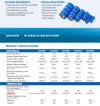pepporony
New Member
- Joined
- Jul 22, 2017
- Messages
- 8
- Reaction score
- 5
- Country
- Thailand
So I have been using Viofo A119 for sometime (over a year?) now. Recently just noticed that the cam turned itself right off after I turned the ignition off. I open the camera up and the capacitor was bulged.
I parked outdoor every working day under the sun and it's quite hot here so there's that.
Now I'm wondering, do we have any site/information on the quality of capacitor used in dashcam?
Like, I know that there are capacitor tier list but I don't know if there is a site that says which brand of capacitor is using in this specific cam. Or do we have to trust the operating temp, stated by the manufacturer?
I parked outdoor every working day under the sun and it's quite hot here so there's that.
Now I'm wondering, do we have any site/information on the quality of capacitor used in dashcam?
Like, I know that there are capacitor tier list but I don't know if there is a site that says which brand of capacitor is using in this specific cam. Or do we have to trust the operating temp, stated by the manufacturer?

